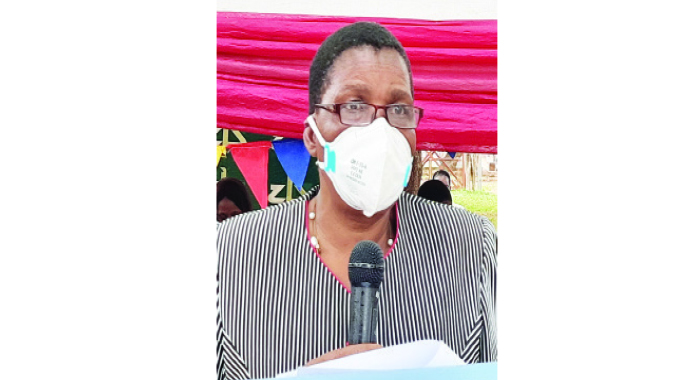Ozone Defenders put school on world map

Leonard Ncube, Victoria Falls Reporter
THEY are called Ozone Defenders and have put their school on the world map with environment conservation and recycling projects that include a biogas digester which is producing gas energy used for cooking at the school’s kitchen.
Ozone Defenders is an environment club formed by learners with the help of teachers at Chamabondo Primary School in Victoria Falls in 2014.
The club has 40 members drawn from Grade Four to Seven classes and new members are recruited for continuity each year when those in Grade Seven leave.
They built a grass-thatched “recycled” summer hut using water and soft drink plastic bottles and started a biogas digester which is producing gas energy used for cooking at the school’s kitchen.
Authorities have said it is the only primary school in Matabeleland North with viable environment projects while some former pupils have introduced the concept at different secondary schools.
The school won the Secretary Merit Award for 2018 which Primary and Secondary Education Secretary Mrs Tumisang Thabela presented last week for among other activities, implementing viable environmental conservation projects as well as implementing the continuous assessment learning activity (CALA) and the new competence-based learning curriculum.
Speaking about the biogas digester, the school head girl Knowledge Sibanda who is also in Grade Seven said: “We don’t throw away digestible material because we need the materials for feeding into the bio digester for recycling.”
Some residents from surrounding villages visit the school to learn about recycling and the biogas digester which is in the orchard.
The biogas digester has a 9 cubic metre-tank buried in the ground with a capacity to produce 9kg of gas, according to the teachers-in-charge of the club, Messrs Mduduzi Madala and Davison Ganyavu and Mrs Valentine Nyoni. Initially the school used cow dung to produce gas and started using food left overs when Government introduced schools feeding programme.
The left overs are put into the feeder and pushed down a pipe to the tank called a stomach where decomposition takes place.
A separator sucks gas from waste matter which is pushed into an outlet tank from where it is taken for use in the garden as manure.
The gas goes through a breather where water is allowed to drip from the pipe to purify the product which is then led through pipe to a kitchen where there is a gas stove.
The school uses the gas for cooking.
The school is appealing for assistance with a purifier and compressor to be able to store the gas and commercialise
the project as there is no storage facility at the moment.
Mrs Nyoni said the club had put the school on the world map as it has been invited to showcase at a number of meetings organised by the United Nations World Tourism Organisation and in 2019 won a trophy and prize money for being second best environmentally friendly school countrywide.
“The community comes here to learn. These days we don’t produce because we have no storage facility. This is clean energy and we have been using it in our kitchen. There is value addition as well and we also use the waste in the garden. The the piggery project was started using proceeds from the Ozone Defenders Club,” she said.
The president of the club, Taderera Tafadzwa who is in Grade Seven and is the school’s head boy, said the idea is to impart environment conservation knowledge to learners.
He told Chronicle how they built a grass thatched “recycled” summer hut.
“The Ozone Defenders built the structure. It started with picking of empty bottles and filing them with wet sand to build the wall. National Railways of Zimbabwe donated thatch grass for roofing while the Environmental Management Agency donated recycled bricks for tiling. The structure has many functions and we are glad that we have made an impact to the community which borrowed the idea and many are constructing similar sheds and toilets at home,” he said.
Club members picked empty plastic bottles from the streets and nearby shops and used 1 800 of them to build the one-metre-high wall of the summer hut.
The school calls the shed a pavilion or gazebo and is used for meetings by school clubs, resting place for staff and lately as an isolation centre for learners suspected to have contracted Covid-19.
The plastic bottles were filled with wet sand for strength before being neatly arranged.
Chamabondo Primary School has embraced greening technology as the school recycles waste.
The club has also made rubbish bins using plastic bottles, making the Victoria Falls City Council run school an epitome of sustainable development in the community.
A former pupil and former president of the club Nkosilathi Nyathi (18) is now Unicef Zimbabwe environment ambassador and he took the idea to Inyathi High School in Bubi when he went for Form One five years ago.












Comments